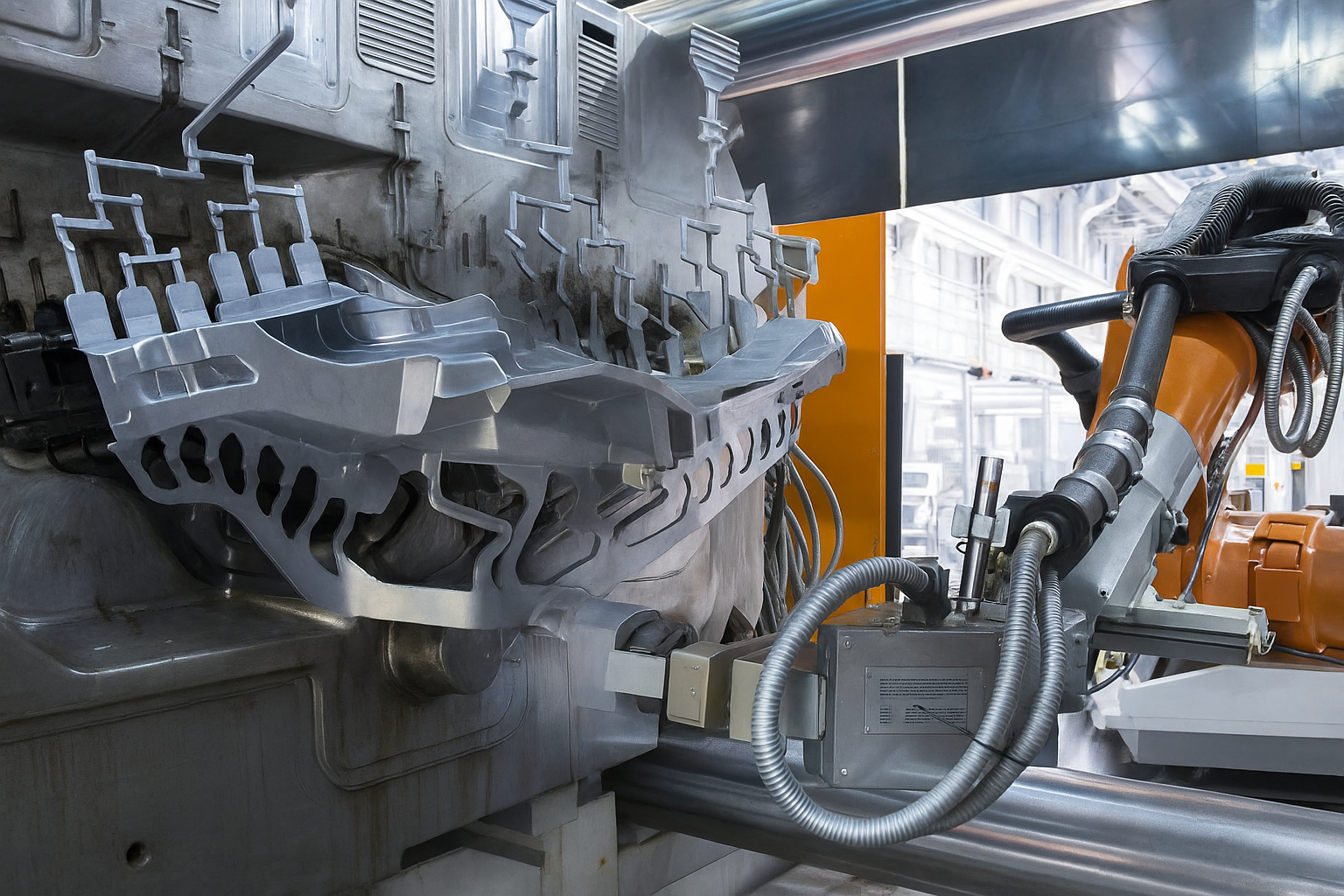Die casting technology is widely used today, especially for light alloy production. However, many people still find the differences between low-pressure die casting (LPDC) and high-pressure die casting (HPDC) unclear. To better understand, let’s first look at their respective processes.
Low-Pressure Die Casting (LPDC)
In low-pressure die casting, the mold is placed above a sealed crucible filled with molten metal. Compressed gas is introduced into the crucible, generating a low pressure (0.06–0.15 MPa) on the surface of the molten metal. This pressure pushes the metal upward through a rising tube, filling the mold cavity. The casting solidifies under controlled conditions to form the final part.
This process offers several advantages:
-
High dimensional accuracy: Because pressure continuously feeds molten metal into the mold cavity, the casting is compact and precise—comparable to high-pressure die casting.
-
Dense microstructure and minimal slag: Since the rising tube draws metal from below the liquid surface (where slag floats), the resulting part is clean and dense.
-
Good mechanical strength: The low gas porosity makes the parts suitable for heat treatment.
-
Complex geometry capability: It is ideal for medium-thickness parts (minimum wall thickness around 3 mm) with intricate shapes.
However, the production efficiency is lower than high-pressure casting due to the slower filling and solidification process.

High-Pressure Die Casting (HPDC)
In high-pressure die casting, molten metal is injected into the mold cavity under very high pressure (15–100 MPa) and high velocity (10–80 m/s) by a plunger. The metal quickly fills the cavity and rapidly solidifies to form the casting.
This process is characterized by:
-
High efficiency: The short cycle time makes it ideal for mass production.
-
Excellent surface finish: Thanks to rapid filling and solidification, the surface roughness can reach Ra 6.3 µm, and in some cases Ra 1.6 µm.
-
Thin-walled capability: Suitable for producing ultra-thin parts with wall thickness as low as 0.3–0.5 mm.

However, compared to LPDC, HPDC parts tend to have higher porosity and lower density, which slightly reduces mechanical strength. Moreover, they cannot undergo heat treatment, since trapped air may expand and cause blistering or cracking. HPDC parts are also not recommended for applications requiring large machining allowances (the dense surface layer would be damaged, reducing strength). The recommended machining allowance is less than 0.25 mm.
Summary
| Feature | Low-Pressure Die Casting | High-Pressure Die Casting |
|---|---|---|
| Pressure | 0.06–0.15 MPa | 15–100 MPa |
| Filling Speed | Slow and controlled | Fast (10–80 m/s) |
| Efficiency | Moderate | Very high |
| Wall Thickness | ≥ 3 mm | 0.3–0.5 mm |
| Porosity | Low | High |
| Heat Treatment | Suitable | Not suitable |
| Surface Finish | Good | Excellent |
| Typical Application | Complex, medium-thickness parts | Thin-walled, high-volume production |
In short, low-pressure die casting offers superior internal quality and is suitable for parts that require high strength and post-processing, while high-pressure die casting excels in production speed and surface finish, making it ideal for large-scale manufacturing of thin-walled components.

Compartir:
Every Detail Matters — Crafting Optical Housings with Precision
CNC Optical — Precision Machining for Optical Components